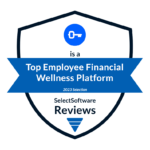1. Frontline workers are struggling financially
Financial Health Network’s data indicates that 30% of Americans overall are considered financially healthy based on eight different financial health measures; the figure dips to 13% when looking specifically at frontline employees.
While 25% of frontline workers are considered financially vulnerable, that’s true of just 17% of the broader population.
2. Frontline employees lose much of their income to debt
Financially vulnerable individuals spend about 14% of their income on debt due to fees and interest rates. (This is not debt related to a mortgage or student loans).
By comparison, financially healthy individuals spend about 1% of their income on debt. It’s expensive to be poor in America.
3. Many frontline employees are caregivers
Frontline workers are disproportionately female and are often caring for at least one other person in their household, such as children, disabled individuals, and/or parents.
The fact that 72% of frontline workers are also the primary earners in their household underscores the pressures and costs these low-wage earners face.
4. Frontline employees’ financial needs are complicated
“The financial lives of frontline workers are complex and nuanced. They’re often just stitching together their day-to-day financial existence, usually in less than optimal circumstances,” said Matthew Bahl, Financial Health Network’s Vice President, Workplace Market Lead, on Brightside’s “Do You Need a Frontline Financial Health Strategy?” webinar.
For example, when Amazon dug into its frontline employees’ financial needs, they spanned topics ranging from a car breaking down, not being able to afford a car, challenges with living arrangements, confusion about how to use a 401(k), and difficulty navigating financial basics.
As Justin Roberts, Amazon’s Sr. Manager, Financial Benefits, shared on the aforementioned webinar, that insight led Amazon to bring in Brightside to “…break down those complexities, make things easy, and maybe get to the genesis of some problems.”
5. Frontline workers need help handling financial shocks
Financial shocks happen to 60% of people each year. For financially vulnerable frontline workers who are already struggling with a lack of liquidity, debt, no savings, and poor credit, that shock can be the start of a ripple effect to financial destruction, without access to a non-predatory solution they can trust.
Your frontline employees are critical to your business, and supporting their financial needs can translate into positive business outcomes including lower turnover and healthcare costs, increased productivity, and reduced absenteeism. Yet, seeing those results requires an employee benefit that can support frontline workers’ complex situations. That’s why Amazon and other large employers choose Brightside Financial Care.
To learn more about Brightside, click here.





